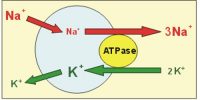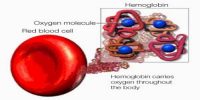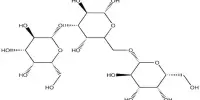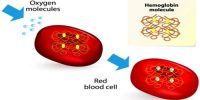Hemoglobin (Hb) may be defined as a vital conjugated protein present inside the Red Blood Cells (RBC). It is the protein molecule in red blood cells that bear oxygen from the lungs to the body’s tissues and returns carbon dioxide from the tissues back to the lungs.
Component: Two parts
(i) Heam = 4%
(ii) Globin = 96%
Normal hemoglobin level
Adults
In adults, the average hemoglobin level is slightly higher for men than it is for women. It’s measured in grams per deciliter (g/dL) of blood.
| Sex | Normal hemoglobin range (g/dL) |
| Female | 12.5–15.5 |
| Male | 13.5–17.5 |
Children
Infants tend to have higher average hemoglobin levels than adults do. This is because they have higher oxygen levels in the womb and need more red blood cells to transport the oxygen. But this level starts to go down after several weeks.
| Age | Female range (g/dL) | Male range (g/dL) |
| 0–30 days | 13.4–9.9 | 13.4–9.9 |
| 31–60 days | 10.7–17.1 | 10.7–17.1 |
| 2–3 months | 9.0–14.1 | 9.0–14.1 |
| 3–6 months | 9.5–14.1 | 9.5–14.1 |
| 6–12 months | 11.3–14.1 | 11.3–14.1 |
| 1–5 years | 10.9–15.0 | 10.9–15.0 |
| 5–11 years | 11.9–15.0 | 11.9–15.0 |
| 11–18 years | 11.9–15.0 | 12.7–17.7 |
A low hemoglobin count is normally defined as fewer than 13.5 grams of hemoglobin per deciliter (135 grams per liter) of blood for men and less than 12 grams per deciliter (120 grams per liter) for women.
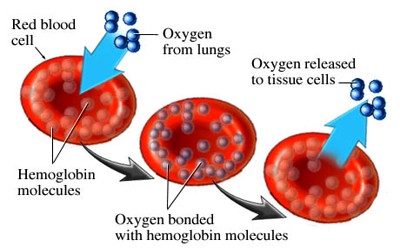
Fig: Hemoglobin (Hb) Function
Function
It forms an unbalanced, reversible bond with oxygen; in the oxygenated state it is called oxyhemoglobin and is light red; in the condensed state it is purplish blue. If in lungs, the oxygen levels are high the hemoglobin shows a better affinity towards the oxygen molecules and as it bounds to more oxygen, this property of affinity increases and vice versa.
Transport
It transports oxygen and carbon dioxide between lungs and tissue.
Acid-base regulation – Hb is an important blood buffer and maintain pH of Blood.
HbO2 + CO ↔ HbCO + O2
HbNH2 + CO2 ↔ HbNHCOOH
Pigment formation: Various pigments like bilirubin, biliverdin, etc. formed from Hb.
Reservoir: It reserves iron and protein.
Blood pressure regulation: It regulates B. P by increasing blood viscosity.
Homeostasis: It maintains homeostasis of blood.

